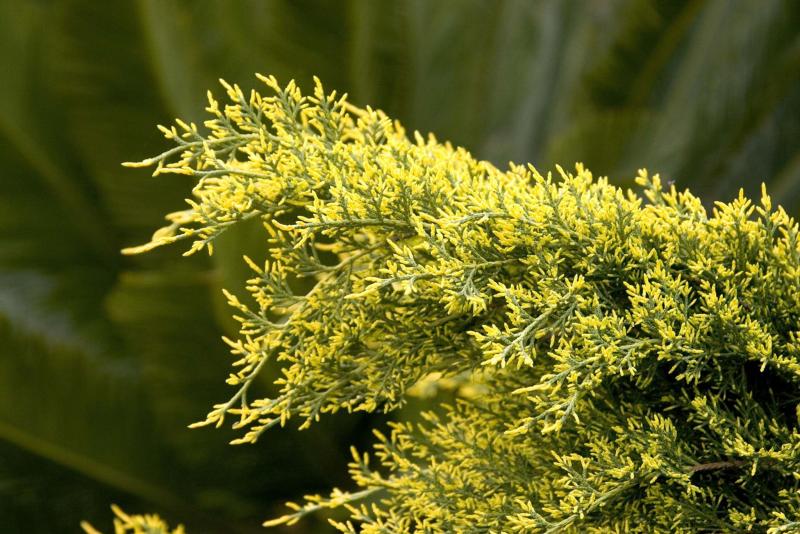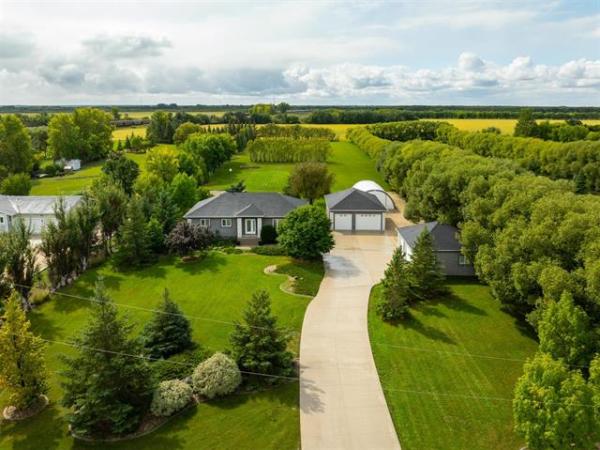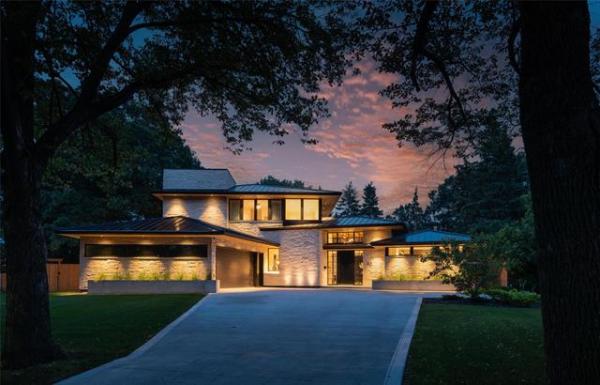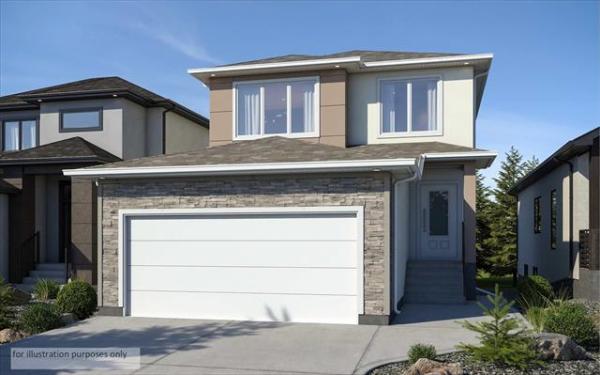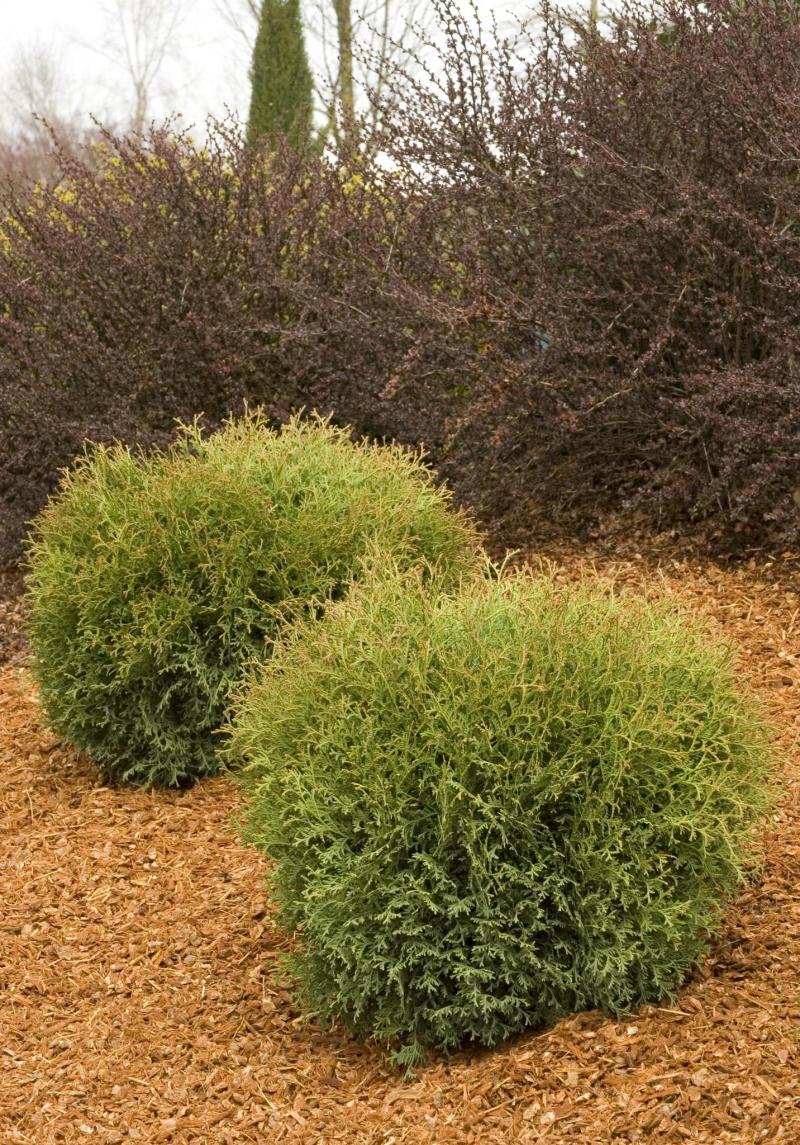
MONROVIA
A garden stalwart, compact globe-shaped Hetz Midget Cedar finds many applications in the large or small landscape.
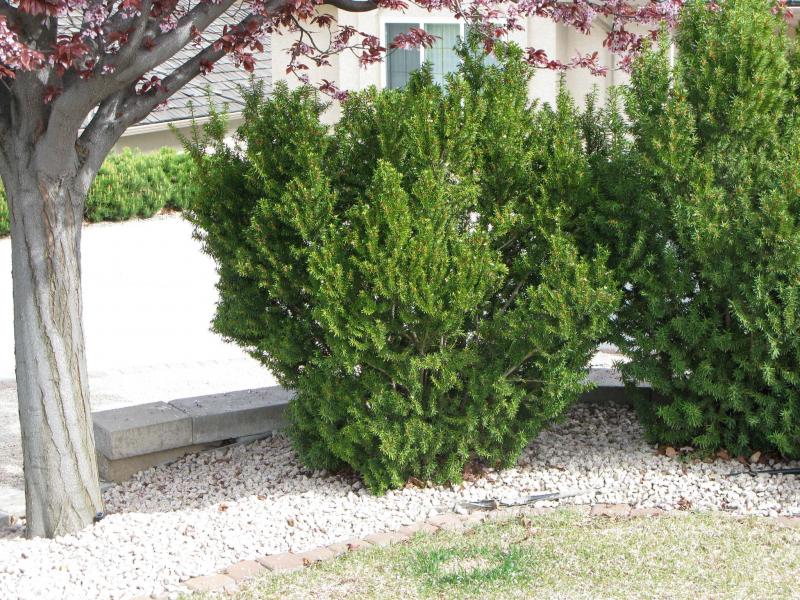
BYLANDS NURSERY
With a broadly pyramidal, compact form, Hill’s Yew can be sheared or shaped to a desired form.
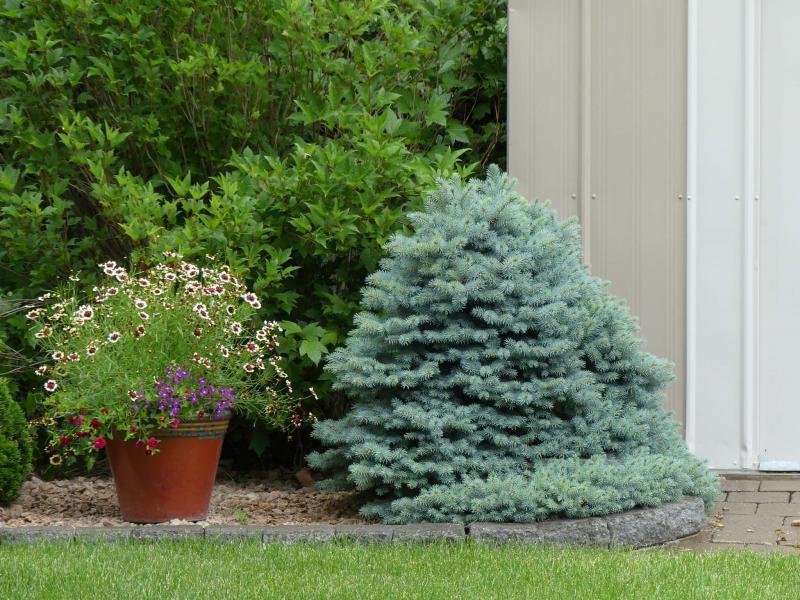
BYLANDS NURSERY
Symmetrical, compact, and slow growing, Byland’s Dwarf Blue Spruce is an adorable, low-maintenance addition to your landscape.
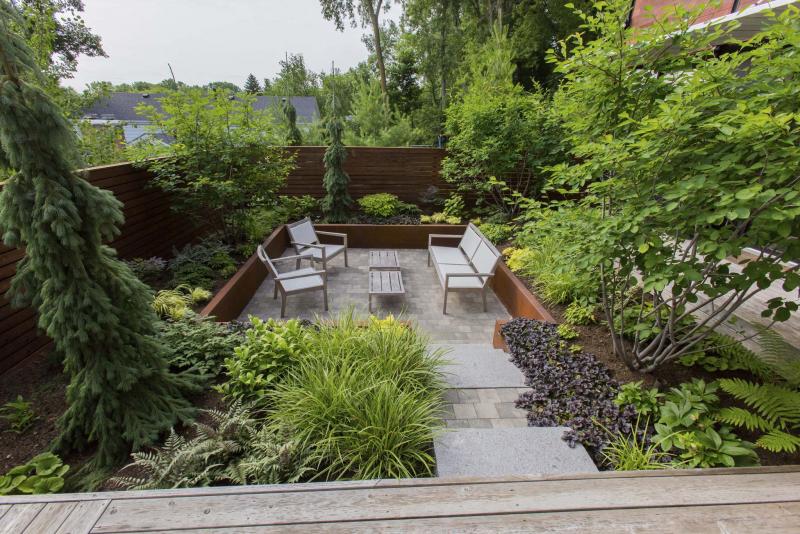
PHILLIPS GARDENS
The narrow form of Weeping White Spruce frames the corners of this jewel of a small landscape without overwhelming it.
There is a resurgence of interest in the use of evergreens and conifers in the landscape, says Kate Karam, the editorial director for U.S.-based nursery company Monrovia, which grows and sells a wide range of plants that are shipped to garden centres throughout North America, including Manitoba.
In a recent blog post titled "Small Space, Big Solutions," Karam describes how a mixture of evergreens and conifers in even the smallest of landscapes can evoke the serenity of a forest.
Generally, evergreens and conifers are slow-growing. While some are majestic in stature, others are dwarf and compact by nature. Their broad variety of habits — weeping, columnar, pyramidal, broad, or prostrate — together with textural qualities that range from very dense to open and lacy, create sculptural interest in the landscape. Evergreens such as Weeping White Spruce (Picea glauca Pendula), for example, can be used to frame out the corners of a small landscape without overwhelming the space. Although this particular spruce variety eventually attains a significant mature height, its blue-green foliage sweeps downward, hugging its trunk, with an overall mature width of no more than three metres.
Long-lived (up to 50 years) and extremely hardy (zone 2a), the narrow architectural form of Weeping White Spruce creates mood, says Karam, and lends a feeling of drama and intimacy to small spaces. As a vertical accent, this impressive evergreen can also be used to define borders, create a sense of enclosure, and screen a view.
In addition to their overall impact on the landscape, said Karam in a recent phone interview, the renewed interest by homeowners in the use of evergreens and conifers in the landscape can be attributed to their four-season value and low-maintenance.
"Colour in the zone 3 garden," says Karam, "shouldn’t be limited to the growing season. The desire for multi-season interest is leading the charge for plants that give you structure, privacy, and year-round colour."
With the increase in demand for dwarf and compact plants, what’s old is new again. Hetz Midget Globe Cedar (Thuja occidentalis) is a stalwart, reliably hardy plant for the garden that is enjoying renewed demand. With a mature height and spread of only 60 cm, this dense, slow-growing, globe-shaped evergreen shrub has forest green foliage and is hardy to zone 3. A great evergreen accent at the front of the border, it requires no shearing to maintain its uniform globe form. Plant in multiples or use as a specimen plant.
Byland’s Dwarf Blue Spruce, a recent introduction from Byland’s Nursery, grows to about 90 cm tall and wide. It has short, medium blue-coloured needles and is hardy to zone 2. It has multiple growing points resulting in a symmetrical form since it does not bolt into a single leader. It requires no pruning and has a very slow growth rate in comparison to other globe spruce varieties.
Last fall, Oakridge Garden Centre in Steinbach offered Columnar Mugo Pine (Pinus mugo Columnaris), a very slow, growing, fine-textured evergreen that reaches a maximum height of 1.5 to three metres. Hardy to zone 2, this compact plant produces small ornamental cones and has the distinctive feature of reddish-orange bark.
Also found at Oakridge, Hill’s Yew (Taxus x media Hillii) has dark olive green, soft-needled foliage. A striking specimen in the home landscape, the compact, broadly pyramidal form of this variety of yew is also suitable as a formal or informal hedge and can be easily sheared and shaped to the desired form. The female plants have showy red berries known as arils. Classified as zone 4, yew is finding more of a presence in Manitoba gardens. Be advised that all parts of this plant are toxic when ingested.
Karam says that breeders are introducing more and more cold-hardy juniper, mugo pine, and cypress varieties with colour that transitions in winter to unique bronze, purple-maroon, or gold tones. Varieties with golden or coppery-orange colour, says Karam, have been slower to catch on yet their unique attributes demand a closer look.
Indulge your sense of adventure, suggests Karam, and consider Sea of Gold (Juniperus x pfitzeriana Monsan), a new, low-growing conifer (about a metre tall and wide) with lacy foliage. Developing leaves are bright yellow, becoming a deeper yellow-green as they fully expand. The plant is said to have superb colour retention and is classified as hardy to zone 3.
Gold Coast juniper (Juniper x pfitzeriana ‘Aurea Improved’) is also a gold-tipped variety with compact form. Newly emerging leaves are not as bright yellow as those of Sea of Gold and the fully expanded leaves are more of a light green in colour. Oakridge co-owner Pierre Fontaine says that he expects to carry Gold Coast this spring.
Gold Lace juniper (J. chinesis P. Aurea) is a cold-hardy conifer with feathery gold foliage. Semi-dwarf in habit, its mature height is 0.6 metres. With a spread of 1.25 metres, each of these gold foliage conifers adapt easily to banks and slopes or as ground covers along foundations or driveways.
Gerry Engel, an ISA-certified arborist and owner of TreeLife Arborist, says that the best exposure for conifers is a sunny location. Spruce and junipers thrive in full sun, Engel adds, while cedars have more tolerance for shade but will always fare better in sun.
Evergreens and conifers should be planted in well-drained areas. To establish them properly, says Engel, it’s important they receive adequate amounts of moisture throughout the growing season. It’s especially important, too, that they receive abundant moisture by watering deeply in the fall prior to freeze-up. Wildly fluctuating temperatures such as those experienced this winter can result in winter injury to evergreens and conifers. Fortunately, says Engel, the frost didn’t set very deep this year into the ground and an insulation layer of snow was present before freezing temperatures dipped too low.
Engel inspects and monitors his clients’ woody plants throughout the winter months, relieving the weight of heavy, wet snow on evergreen branches by carefully lifting it off.
Evergreens continually lose water (transpire) through their needles even during winter. Desiccating winds and the drying effects of winter sun exposure can result in winter burn (browning of needles). Rather than the use of burlap screens (a labour intensive practice) to shield plants from the drying effects of the winter sun, Engel puts the emphasis instead on good cultural practices including a regular watering regime and the long term goal of improving soil structure.
Rather than the use of synthetic fertilizers, Engel amends the soil around evergreens with annual additions of organic matter such as composted manure. To aid in conserving moisture, he mulches the surrounding area with natural wood chips.
Evergreens and conifers require little pruning; however, sometimes it becomes necessary to remove deadwood, renovate a misshapen form or address the problem of a damaged leader. Engel says that the best time to contact an arborist is now so that you are well ahead of the game rather than waiting to call once the busy season is underway.
colleenizacharias@gmail.com
Interested in becoming a Master Gardener? Register for spring courses: Garden Fundamentals April 22 and April 29 and Botanical Latin, May 6. Classes will be held at Assiniboine Community College Training Centre, Unit 87-1313 Border Street in Winnipeg. To register call 1.800.862.6307 or visit mgmanitoba.com for more information.

